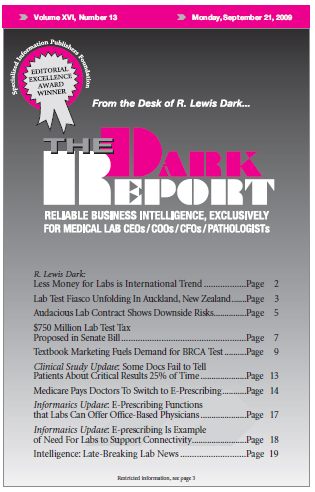PRIMARY CARE PHYSICIANS often do not report patients’ lab test results, according to a recent study of 5,434 patients aged 50 to 69. That won’t be news to most lab directors and pathologists. But there is something new and useful in this study. Its findings are revealing for three reasons. One, it involves a large …
Some Docs Fail to Tell Patients About Critical Results 25% of Time Read More »
To access this post, you must purchase The Dark Report.


